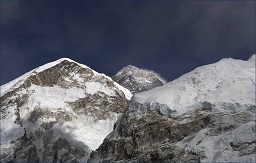| « US Classes Itself as the Nation That Helps Gaza the Most! | UN Demands US Change Constitution to Limit Americans’ Freedoms » |
Record-high number of climbers perished on Everest during 2023 season
Acute mountain sickness, caused by reduced air pressure and lower oxygen levels at high altitudes, accounts for nearly half of all deaths | A total of 18 people died in 2023 on slopes of the world’s highest mountain, Everest, making it the deadliest mountaineering season since the summit was first reached 70 years ago, according to The Himalayan Database that stores information on all expeditions in the Himalayas. ● Acute mountain sickness, caused by reduced air pressure and lower oxygen levels at high altitudes, accounts for nearly half of all deaths. Lower oxygen availability may case pulmonary and cerebral edema, hallucinations and tachycardia. Besides, mountaineers have to endure extreme physical stress while climbing, and often suffer from dehydration. In some cases, these factors can be fatal. ● A total of 317 climbers have perished on Everest during the entire 70-year-long history of successful ascents to the world’s highest mountain. The previous deadliest climbing season, with 17 deaths, was recorded in 2014. ● The Guardian reported in May that this year the Nepalese government had issued the all-time high number of climbing permits - 479. Ascending the mountain is impossible without this document. The newspaper quotes President of Nepal National Mountain Guide Association Ang Norbu Sherpa as saying that more and more inexperienced climbers are trying to reach the summit. People with little or no experience in climbing have been making summit attempts, he explained. ● Variable weather was named as another possible reason for this year’s high death rate. Yuba Raj Khatiwada, the director of Nepal's tourism department, told The Guardian that climate change was the main cause for unsettled weather on the mountain.
No feedback yet
FAIR USE NOTICE: This site contains copyrighted articles and information about environmental, political, human rights, economic, democratic, scientific, and social justice issues, etc. This news and information is displayed without profit for educational purposes, in accordance with, Title 17 U.S.C. Section 107 of the US Copyright Law. Thepeoplesvoice.org is a non-advocacy internet web site, edited by non-affiliated U.S. citizens. editor


